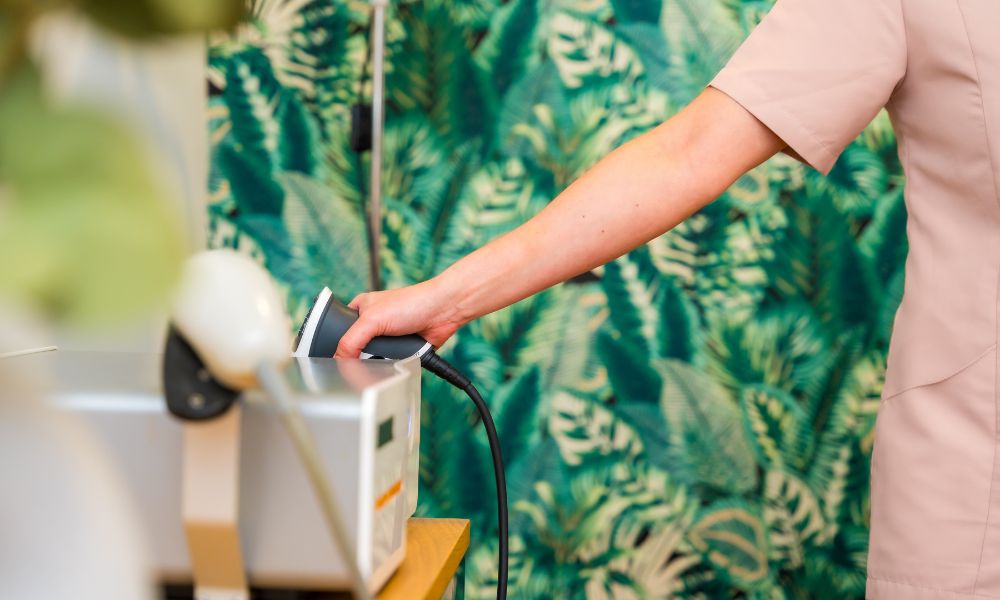Have you ever experienced that persistent pain in your muscles that just won’t go away no matter how much you stretch or rest? This discomfort might be due to muscle adhesions, a common but often misunderstood condition where bands of scar-like connective tissue form between muscle fibers. When muscle adhesion occurs, it can restrict movement, cause pain, and limit your ability to perform daily activities.
Understanding the healing time for muscle adhesions is important for anyone dealing with this issue. Knowing what to expect can help you manage your recovery process more effectively and set realistic expectations. Whether you’re an athlete or someone who’s simply trying to stay active, grasping the nuances of how muscle fibers heal and repair themselves can make a significant difference in your approach to treatment and recovery.
Understanding Muscle Adhesions
Muscle adhesions are areas of fibrous tissue that develop within muscle tissue, often as a result of injury, overuse, or inflammation. These adhesions can create trigger points—knots in the muscle that are sensitive to touch and can cause pain in other parts of the body. When muscle adhesions occur, they can restrict blood flow to the affected area, leading to a decrease in oxygen and nutrients necessary for muscle repair and function.
Types of Muscle Adhesions
Muscle adhesions can be categorized based on their formation and location:
- Acute Adhesions: Develop quickly following a sudden injury or intense exercise.
- Chronic Adhesions: Form gradually due to prolonged overuse or repetitive strain.
- Myofascial Adhesions: Occur in the connective tissue surrounding muscles, impacting flexibility and movement.
Mechanism of Healing
The healing process of muscle adhesions involves three main phases: the inflammatory response, the repair phase, and the remodeling phase. Initially, the body responds to the injury with an inflammatory response, which helps remove damaged cells and initiate healing.
During the repair phase, new soft tissue forms to replace the damaged muscle fibers. This stage can sometimes be managed with treatments like active-release therapy, which helps break down adhesions and restore normal function. Finally, in the remodeling phase, the newly formed tissue matures and strengthens, integrating into the entire musculoskeletal system to restore optimal muscle function and flexibility.
Factors Influencing Healing Time
The healing time for muscle adhesions can vary significantly based on several factors. The severity of the adhesion plays a crucial role, with more severe adhesions often causing intense discomfort and muscle weakness, which can extend the recovery period. The location of the adhesion within the body also impacts healing; adhesions in areas with dense soft tissues and connective tissues, such as the lower back or shoulders, may require more time to heal due to reduced blood flow and mobility.
Additionally, individual health and lifestyle factors, such as overall fitness, nutrition, and adherence to treatment protocols, significantly influence the healing process. For instance, maintaining a healthy lifestyle, staying active, and following prescribed treatments can help manage pain and promote a more efficient recovery.
Treatment Options
Effectively managing muscle adhesions requires a comprehensive treatment approach tailored to the individual’s needs. Here are some of the most effective methods:
Physical Therapy
Physical therapy is a cornerstone of treatment for muscle adhesions, focusing on exercises and techniques designed to restore mobility and reduce pain. Therapists often use soft tissue therapy, including trigger point therapy, to target specific muscle knots and relieve tension. This approach helps in breaking down adhesions and improving overall muscle function.
Massage Therapy
Massage therapy is another effective option for treating muscle adhesions. It helps to improve blood flow and break down adhesions through various techniques. Incorporating heat therapy during massage sessions can enhance relaxation and further aid in the reduction of muscle knots. Regular sessions can significantly reduce pain and improve muscle flexibility.
Stretching and Exercise
Stretching and exercise are essential for maintaining muscle balance and preventing future adhesions. Regular stretching helps to lengthen muscles and improve flexibility, reducing the risk of adhesions. Additionally, targeted exercises can address muscle imbalances that may contribute to the formation of adhesions, promoting long-term muscle health and functionality.

Time Frame for Healing
The body’s healing process for muscle adhesions follows a structured timeline, divided into several distinct phases. Understanding these phases can help manage expectations and guide effective treatment.
Early Healing Phase (Days 1-7)
During the early healing phase, the body initiates an inflammatory response to clear out damaged cells and begin the repair process. This period often involves significant pain and swelling as the body works to stabilize the injured area.
Intermediate Healing Phase (Weeks 2-6)
In the intermediate healing phase, new soft tissue begins to form, replacing the damaged muscle fibers. This stage is crucial for restoring basic function and strength. Active treatments like physical therapy and gentle stretching are particularly beneficial during this time to ensure proper tissue alignment and prevent further adhesions.
Late Healing Phase (Weeks 6-12)
The late healing phase involves the remodeling and strengthening of the new tissue. This phase focuses on returning to full function and involves more intensive rehabilitation exercises to rebuild muscle strength and flexibility. Proper management during this phase is essential to avoid re-injury and ensure a complete recovery.
Monitoring Progress
Monitoring progress during the healing journey of muscle adhesions is essential to ensure effective recovery and prevent complications. Signs of healing include reduced pain, improved range of motion, and increased strength in the affected area. However, if severe pain persists or if there is no noticeable improvement over time, it may be necessary to seek further treatment from healthcare providers.
Poor posture and difficulty performing daily activities can also indicate that additional help is needed. Consulting with a trained specialist can help identify injuries that may require more specialized treatment, ensuring that the healing process continues smoothly and effectively.
Complications and Risks
One of the primary complications in the healing process of muscle adhesions is the formation of scar tissue. Scar tissue can be less flexible and more prone to re-injury, which can hinder full recovery and lead to chronic pain. There is a risk of recurrence of adhesions, especially if the underlying causes, such as poor posture or repetitive strain, are not addressed.
A study published in the Journal of Orthopaedic Research found that scar tissue can significantly impede the functional recovery of muscle tissue, emphasizing the importance of proper rehabilitation and preventive measures to minimize the risk of re-adhesion (Source: Journal of Orthopaedic Research).
Preventive Measures
Preventing muscle adhesions involves adopting several key practices that enhance overall muscle health and athletic performance. Proper warm-up and cool-down routines are essential to prepare the muscles for activity and to reduce the risk of injury. Maintaining good posture throughout daily activities helps prevent the development of muscle knots and adhesions by ensuring that muscles and joints are aligned correctly. Regular exercise and stretching keep muscles flexible and strong, helping to strengthen muscles and prevent imbalances that could lead to adhesions.
Ensuring Long-Term Muscle Health
Understanding the healing journey of muscle adhesions reveals the importance of a thoughtful and informed approach to recovery. This journey involves recognizing how adhesions form, the phases of healing, and the factors that influence recovery time. It’s clear that managing this condition is not just about addressing the immediate pain but also about fostering long-term muscle health.
Seeking professional guidance is invaluable. Physical therapists, massage therapists, and other trained specialists possess the expertise to tailor treatments to your specific needs, ensuring a more effective and efficient healing process. Embracing this professional support can make a significant difference in not only overcoming adhesions but also in preventing future occurrences. Prioritizing expert care underscores a commitment to your well-being and optimizes your path to full recovery.




